In the annals of history, the imposing figure of a Roman cavalryman standing along Hadrian’s Wall evokes a sense of order and strength that defined the northernmost limits of the Roman Empire. These warriors, standing at intervals of approximately 150 feet from each other, were crucial in maintaining the security of Britannia. One such artifact, the renowned Guisborough Helmet, discovered in 1864 at Barnaby Grange Farm, near the eponymous town, adds a layer of mystery to the rich tapestry of Roman military history.
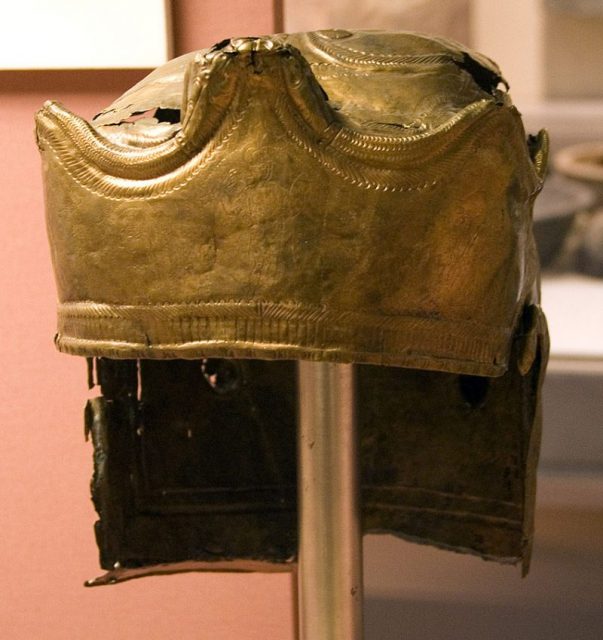
The Guisborough Helmet, as seen from the front left, Prioryman, GFDL
Initially unearthed during road-building efforts in North Yorkshire, the Guisborough Helmet didn’t immediately reveal its true nature. Made of copper alloy, the helmet was initially misinterpreted as a breastplate of Anglo-Saxon or Celtic origin. It wasn’t until 1878 when the British Museum received the artifact that it was accurately identified as a 3rd-century Roman helmet, shedding light on its historical significance.
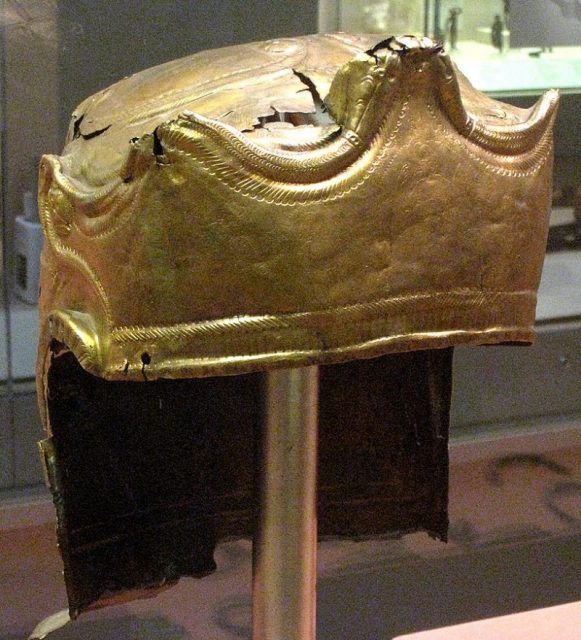
As seen from the front right, Photo: Prioryman, CC BY-SA 3.0
Adorned with engravings of three prominent Roman deities—Victory, Mars, and Minerva—the Guisborough Helmet stands as a testament to the craftsmanship of its time. The missing cheekpieces, though lost to the ages, hint at the original completeness of this remarkable piece of Roman military gear.

However, what makes the Guisborough Helmet particularly intriguing is not just its historical context but the circumstances of its discovery. Found inches away from a stream, flattened and folded, it raises questions about its deposition and purpose. Unlike other Roman artifacts found near military installations, the Guisborough Helmet was buried at a considerable distance from any known Roman presence, adding an element of enigma to its story.
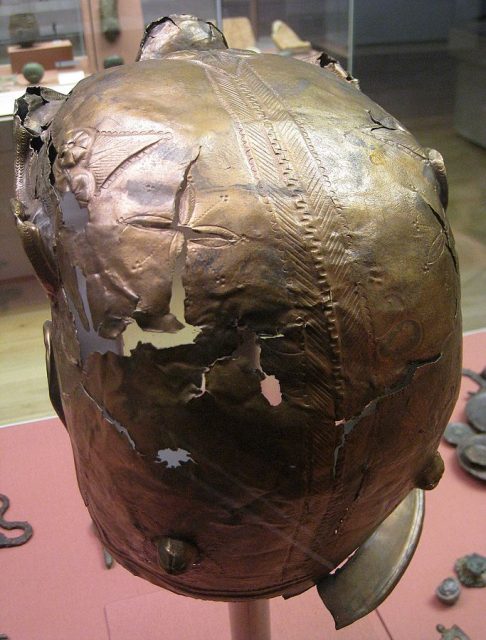
Rear view of the ancient helmet, Photo: Prioryman, CC BY-SA 3.0
One plausible explanation comes from the musings of Dutch history writer Johan Nicolay, who proposed that Roman military equipment might have had a unique “lifecycle.” Retired soldiers, after their service concluded, could have taken certain pieces of equipment home as memorabilia. Alternatively, some soldiers may have chosen to dispose of their gear, burying it as part of specific religious beliefs, away from military establishments.
The perpetual question haunting historians and archaeologists is whether the Guisborough Helmet was designed for combat use or reserved for military events, such as parades and cavalry sports. Recent research has suggested that the artifact held significant value, with the intricate engravings alone requiring several days of meticulous work.
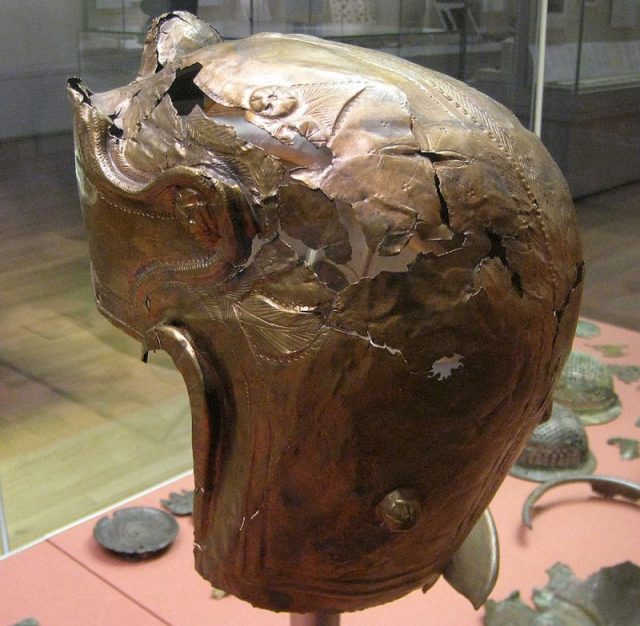
The rear-left view of the helmet, also showing some ruptures, Photo: Prioryman, CC BY-SA 3.0
Comparisons with other Roman cavalry headwear, like the Crosby Garrett Helmet, add another layer to the discussion. Discovered by a British treasure hunter in 2010, the Crosby Garrett Helmet fetched an astounding $3.6 million at auction. Unlike the Guisborough Helmet, the Crosby Garrett Helmet boasts a fully preserved face mask with elaborate details, including tufts of curly hair and a griffin on top. This discrepancy in preservation and design raises the possibility that the Crosby Garrett Helmet might have been reserved for ceremonial purposes rather than combat.
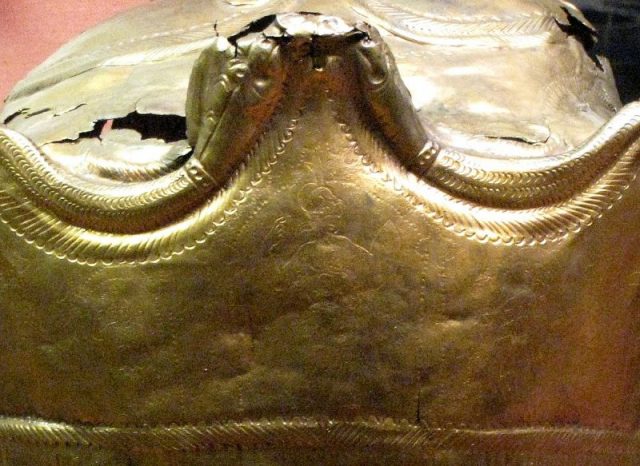
The front peak of the Guisborough helmet, displaying some of the fine embossed work on the piece, Photo: Prioryman, CC BY-SA 3.0
The Guisborough Helmet, despite its flattened and folded state, may have been a cherished possession, echoing the sentiment attached to Roman cavalry gear. Whether used in battle or ceremonial events, these artifacts provide a glimpse into the intricate world of Roman military culture. As historians continue to decipher the mysteries surrounding the Guisborough Helmet, it remains an emblem of the resilience and enigma encapsulated in the remnants of ancient civilizations.